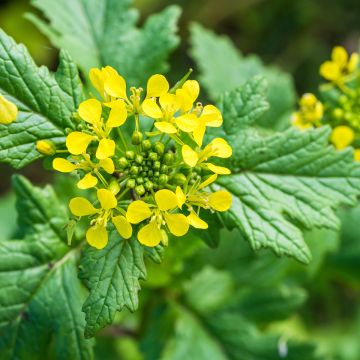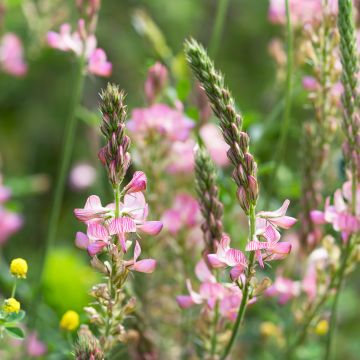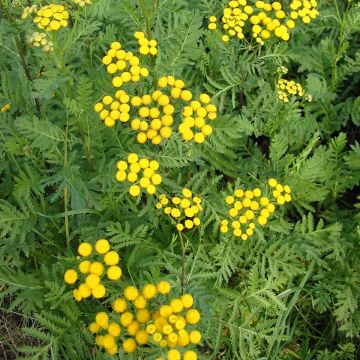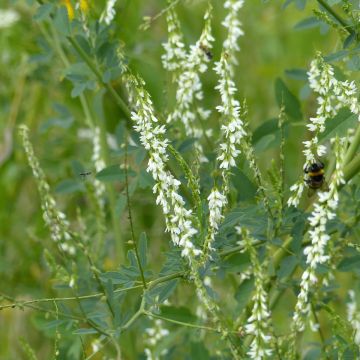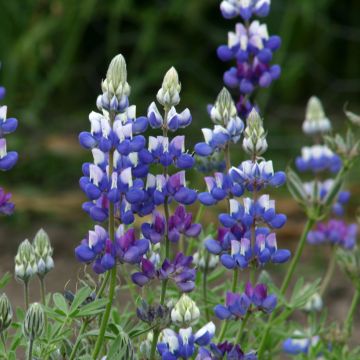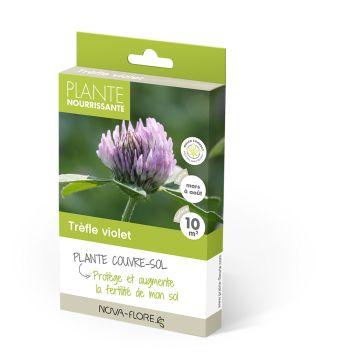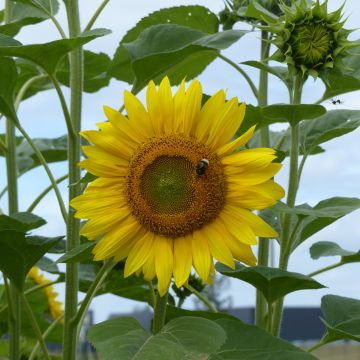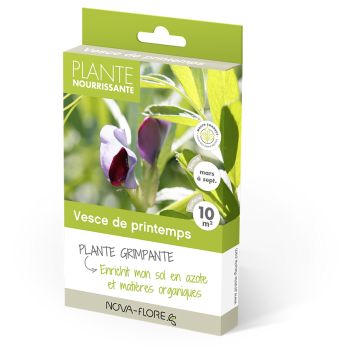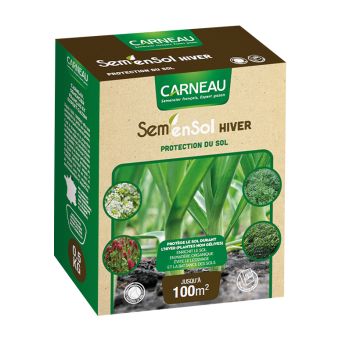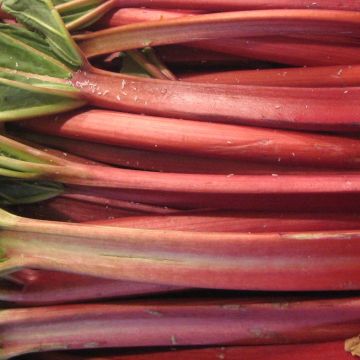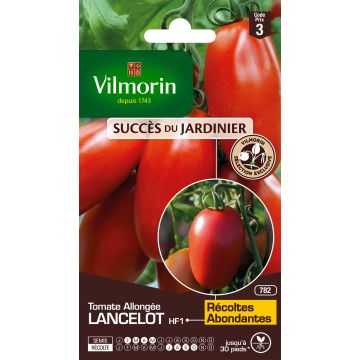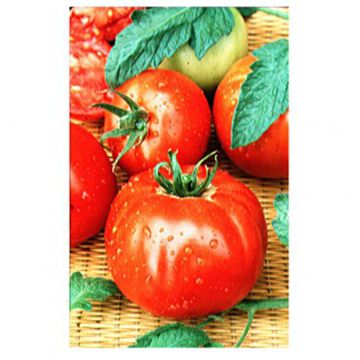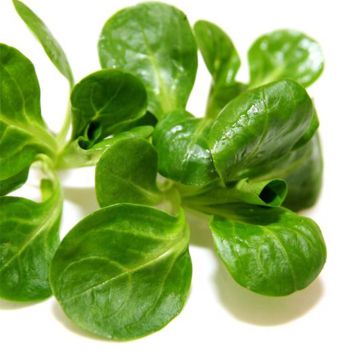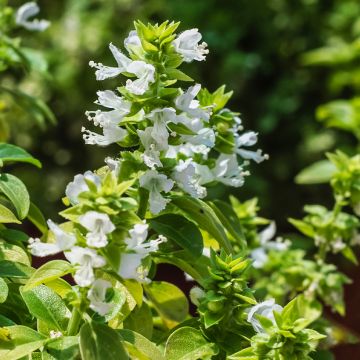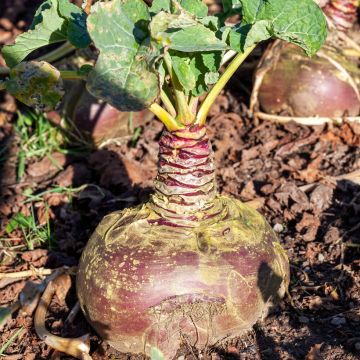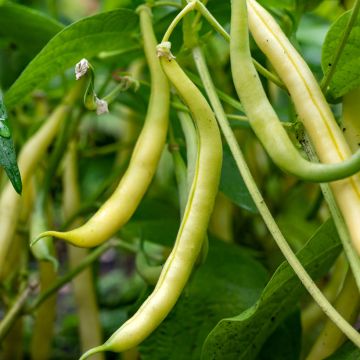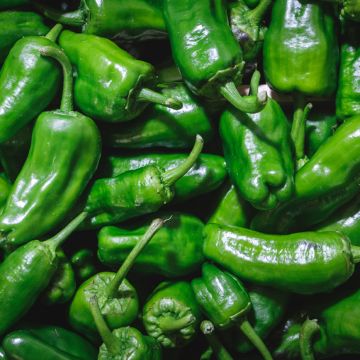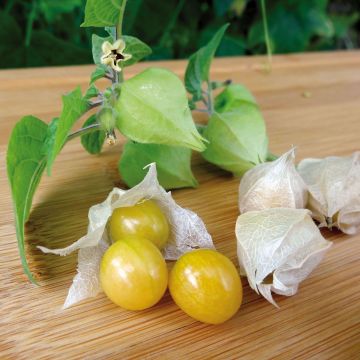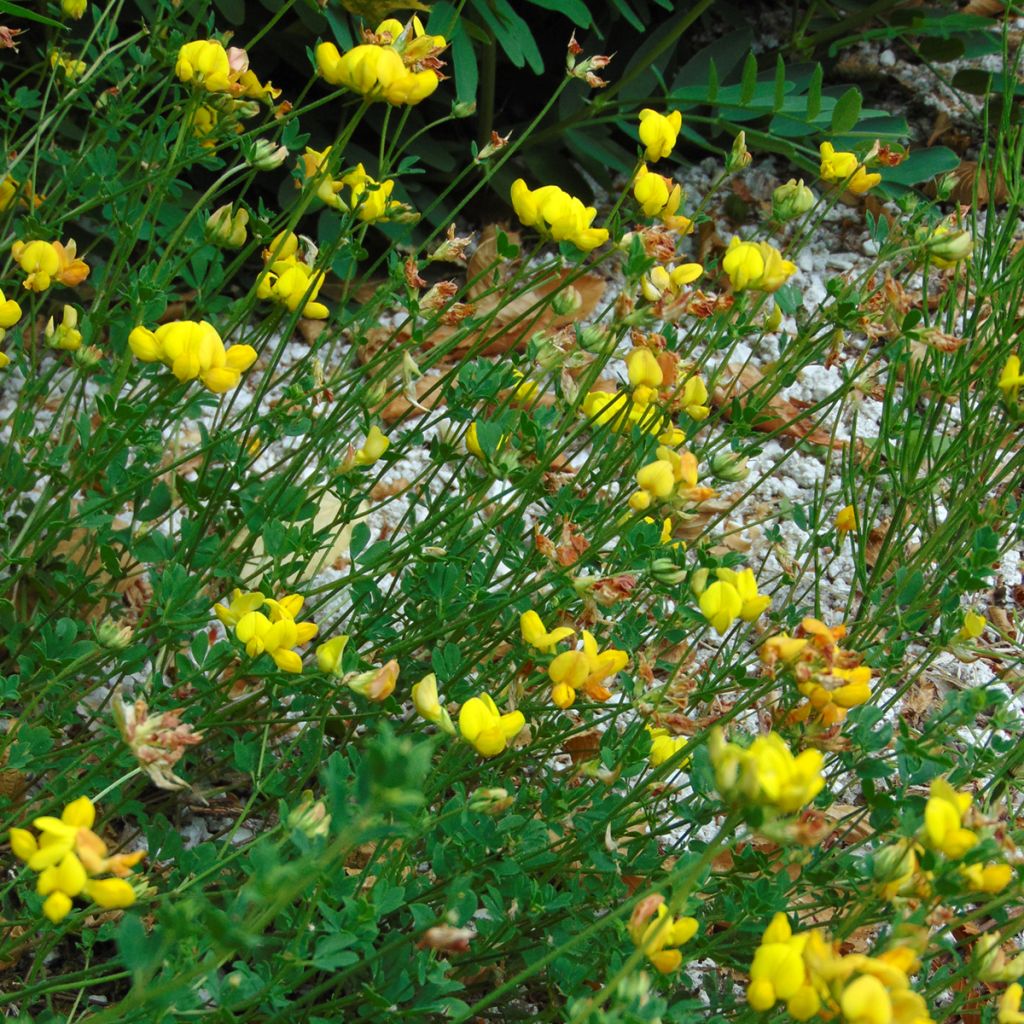

Lotier corniculé - Lotus corniculatus Graines
Lotus corniculatus
Lotus corniculatus
Common Bird's-foot Trefoil, Bird's-foot Deervetch
This item cannot be shipped to the selected country
Dispatch by letter from €3.90
More information
Schedule delivery date,
and select date in basket
This plant carries a 6 months recovery warranty
More information
We guarantee the quality of our plants for a full growing cycle, and will replace at our expense any plant that fails to recover under normal climatic and planting conditions.
Seed-only orders are dispatched by sealed envelope. The delivery charge for seed-only orders is €3.90.
Description
The corniculate lotus, in Latin Lotus corniculatus, is one of those modest flowers, formerly used as green manure or as forage plants, which also deserve a place in the ornamental garden where they will attract pollinators and feed bees. It is a perennial subshrub that bears clover-like leaves, evergreen in mild climates, and pretty golden yellow pea flowers gathered in clusters, from spring to the end of summer. Drought-resistant, hardy and undemanding, it requires full sun, but can tolerate all types of dry to moist soils, even compact and chalky. It can be planted in a rockery, above a wall, in a meadow...
Lotus corniculatus belongs to the Fabaceae family. It is a cosmopolitan plant found in meadows, woods, fields and hillsides, throughout Europe. Depending on the region, it is called Pretty Pea, Bird's-foot Trefoil, Horned Trefoil or Horned Clover. It is a woody-based perennial that forms a dense and spreading tuft, with a semi-ascending habit, 10 to 15cm (4 to 6in) in height, spreading at least 30cm (12in). The flowering period is particularly long and bright, attracting bees and delighting both bees and gardeners from May-June to September-October. The pea flowers succeed each other, keeled, ranging in colour from intense yellow to coppery yellow if the plant grows at high altitudes. They are gathered in small clusters. The foliage, semi-evergreen to evergreen, is composed of small leaves, with 5 rounded leaflets of a lovely bright green. Like clover, these leaves have a particular arrangement: they are arranged along solid or barely hollow stems, lying down or ascending. The flowering is followed by the formation of cylindrical and elongated pods, ending in a small beak (a kind of little horn) that gave the plant its name. When mature, they project the seeds far away. The empty, dry pod resembles a bird's foot. This plant has an extensive and deep root system, which allows it to stabilize the soil in which it thrives. It also provides a habitat for the eggs of about a dozen butterfly species, including endangered blues.
The common lotus is a plant for full sun. Plant it in a rockery, along a gravel path, on a slope, in a naturalistic bed with not too tall plants that would eventually kill it: vetches, purple clover, borage, sainfoin... This lotus was once used to produce a yellow dye. It is used as green manure, as its roots, like those of many legumes, fix nitrogen. The corniculate lotus is toxic to humans in high doses and with regular consumption: its use in phytotherapy must be strictly followed by a doctor.
Green manures are sown on uncultivated plots or intercalary plots, between rows of vegetables. They are either naturally destroyed by frost or cut before seed formation. Once destroyed, they can be left in place as mulch, or crushed and incorporated into the surface layers of the soil, or collected and added to compost.
Report an error about the product description
Lotus corniculatus in pictures
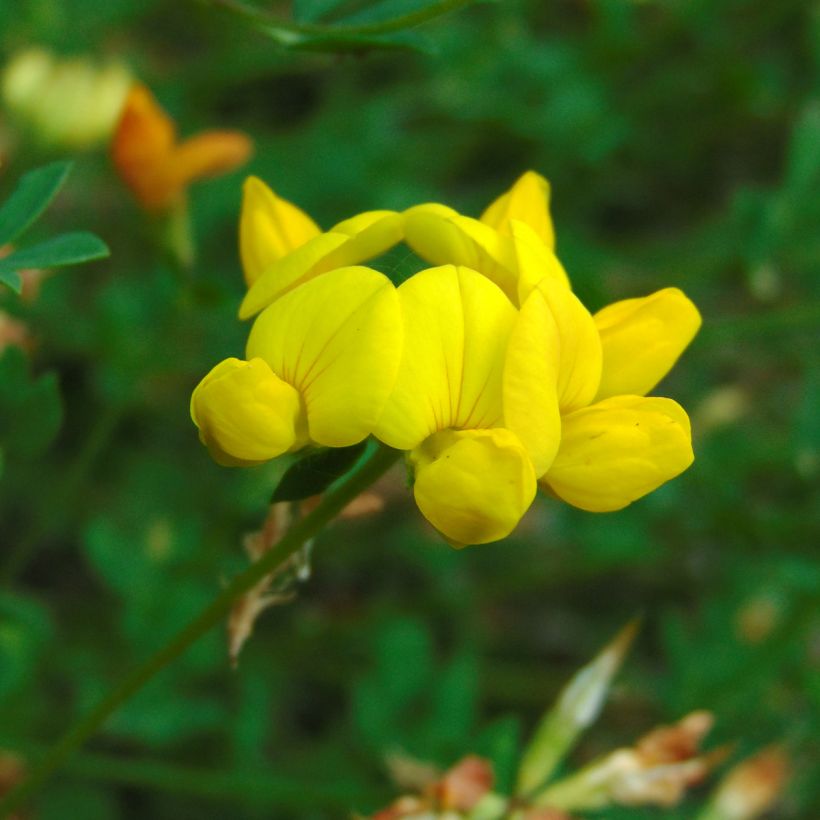

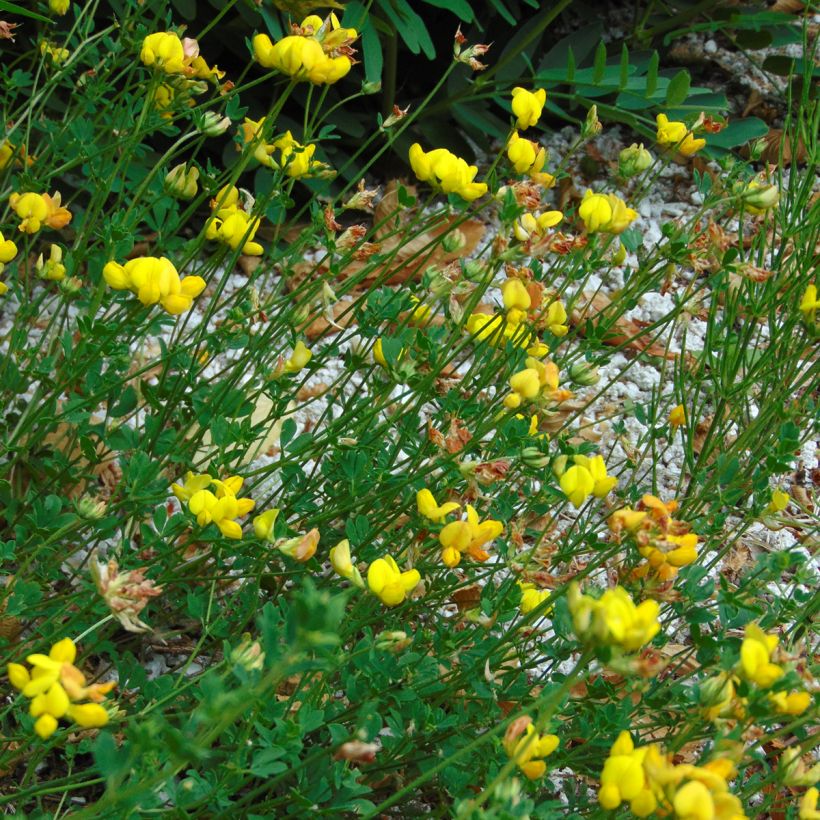

Harvest
Plant habit
Foliage
Botanical data
Lotus
corniculatus
Fabaceae
Common Bird's-foot Trefoil, Bird's-foot Deervetch
Western Europe
Perennial
Other Green fertilisers
Planting and care
The corniculate lotus is sown by broadcasting in the spring, from April to June, in association with other plants in the meadow, or from August to October. Used as green manure, it will be sown from August to October under the cover of the previous crop. If allowed to go to seed, the lotus will self-seed spontaneously.
It is sown at a rate of 2g per m², for small areas and in the vegetable garden, or at a rate of 200 to 250g per 100m² in meadows and green manure associated with a cereal crop. Sow in well-prepared and refined soil, free of weeds.
In ornamental gardens: adding compost at planting is recommended, choose a location with well-drained soil. Once established and rooted, this lotus will take care of itself and requires no special maintenance. Make sure not to associate it with too tall plants, as it absolutely needs sunlight to thrive.
Use as green manure: mow the plant before seed production. Then bury it.
In meadows, flower beds or flower strips: optionally mow in autumn.
Seedlings
Care
Intended location
This item has not been reviewed yet - be the first to leave a review about it.
Vegetable seeds
Haven't found what you were looking for?
Hardiness is the lowest winter temperature a plant can endure without suffering serious damage or even dying. However, hardiness is affected by location (a sheltered area, such as a patio), protection (winter cover) and soil type (hardiness is improved by well-drained soil).

Photo Sharing Terms & Conditions
In order to encourage gardeners to interact and share their experiences, Promesse de fleurs offers various media enabling content to be uploaded onto its Site - in particular via the ‘Photo sharing’ module.
The User agrees to refrain from:
- Posting any content that is illegal, prejudicial, insulting, racist, inciteful to hatred, revisionist, contrary to public decency, that infringes on privacy or on the privacy rights of third parties, in particular the publicity rights of persons and goods, intellectual property rights, or the right to privacy.
- Submitting content on behalf of a third party;
- Impersonate the identity of a third party and/or publish any personal information about a third party;
In general, the User undertakes to refrain from any unethical behaviour.
All Content (in particular text, comments, files, images, photos, videos, creative works, etc.), which may be subject to property or intellectual property rights, image or other private rights, shall remain the property of the User, subject to the limited rights granted by the terms of the licence granted by Promesse de fleurs as stated below. Users are at liberty to publish or not to publish such Content on the Site, notably via the ‘Photo Sharing’ facility, and accept that this Content shall be made public and freely accessible, notably on the Internet.
Users further acknowledge, undertake to have ,and guarantee that they hold all necessary rights and permissions to publish such material on the Site, in particular with regard to the legislation in force pertaining to any privacy, property, intellectual property, image, or contractual rights, or rights of any other nature. By publishing such Content on the Site, Users acknowledge accepting full liability as publishers of the Content within the meaning of the law, and grant Promesse de fleurs, free of charge, an inclusive, worldwide licence for the said Content for the entire duration of its publication, including all reproduction, representation, up/downloading, displaying, performing, transmission, and storage rights.
Users also grant permission for their name to be linked to the Content and accept that this link may not always be made available.
By engaging in posting material, Users consent to their Content becoming automatically accessible on the Internet, in particular on other sites and/or blogs and/or web pages of the Promesse de fleurs site, including in particular social pages and the Promesse de fleurs catalogue.
Users may secure the removal of entrusted content free of charge by issuing a simple request via our contact form.
The flowering period indicated on our website applies to countries and regions located in USDA zone 8 (France, the United Kingdom, Ireland, the Netherlands, etc.)
It will vary according to where you live:
- In zones 9 to 10 (Italy, Spain, Greece, etc.), flowering will occur about 2 to 4 weeks earlier.
- In zones 6 to 7 (Germany, Poland, Slovenia, and lower mountainous regions), flowering will be delayed by 2 to 3 weeks.
- In zone 5 (Central Europe, Scandinavia), blooming will be delayed by 3 to 5 weeks.
In temperate climates, pruning of spring-flowering shrubs (forsythia, spireas, etc.) should be done just after flowering.
Pruning of summer-flowering shrubs (Indian Lilac, Perovskia, etc.) can be done in winter or spring.
In cold regions as well as with frost-sensitive plants, avoid pruning too early when severe frosts may still occur.
The planting period indicated on our website applies to countries and regions located in USDA zone 8 (France, United Kingdom, Ireland, Netherlands).
It will vary according to where you live:
- In Mediterranean zones (Marseille, Madrid, Milan, etc.), autumn and winter are the best planting periods.
- In continental zones (Strasbourg, Munich, Vienna, etc.), delay planting by 2 to 3 weeks in spring and bring it forward by 2 to 4 weeks in autumn.
- In mountainous regions (the Alps, Pyrenees, Carpathians, etc.), it is best to plant in late spring (May-June) or late summer (August-September).
The harvesting period indicated on our website applies to countries and regions in USDA zone 8 (France, England, Ireland, the Netherlands).
In colder areas (Scandinavia, Poland, Austria...) fruit and vegetable harvests are likely to be delayed by 3-4 weeks.
In warmer areas (Italy, Spain, Greece, etc.), harvesting will probably take place earlier, depending on weather conditions.
The sowing periods indicated on our website apply to countries and regions within USDA Zone 8 (France, UK, Ireland, Netherlands).
In colder areas (Scandinavia, Poland, Austria...), delay any outdoor sowing by 3-4 weeks, or sow under glass.
In warmer climes (Italy, Spain, Greece, etc.), bring outdoor sowing forward by a few weeks.

































